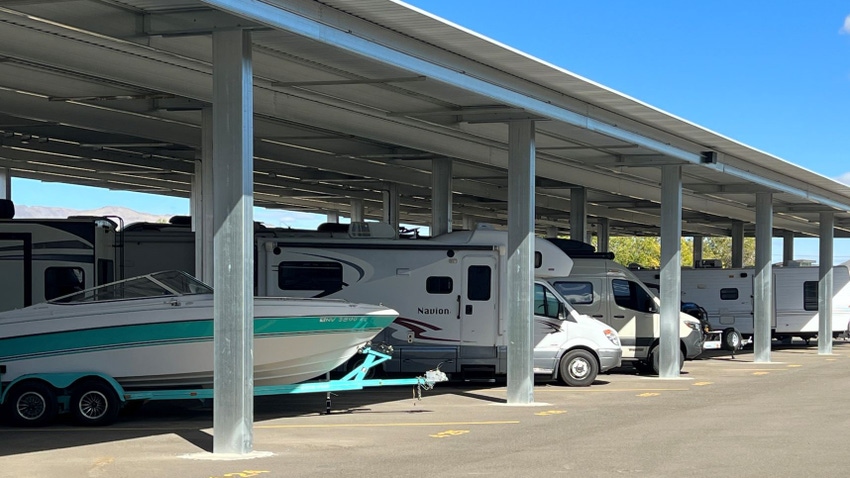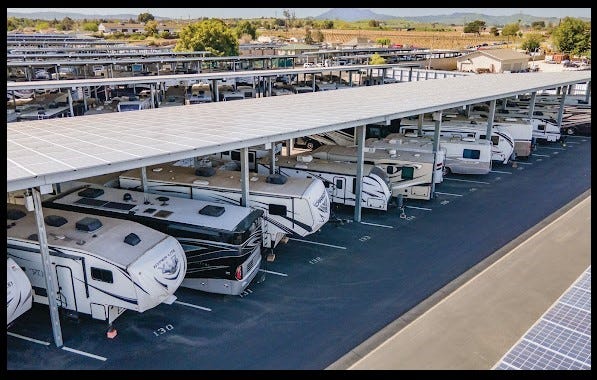Site-Maintenance Tips for Keeping Your Boat/RV-Storage Facility Shipshape
Like traditional self-storage, boat/RV-storage facilities require regular maintenance to look good, function well, and attract and retain customers. By keeping a close eye on your property, you’ll spot problems before they become expensive repairs. Get advice from industry experts on keeping your site shipshape.

While the boat- and RV-storage industry is still in its infancy, many developers cling to the “Field of Dreams” mentality, believing “If you build it, they will come.” Those with a sharper vision, however, know that an immaculate site offering the highest level of service is what attracts—and keeps—this savvy customer base.
Smart facility operators work hard to ensure their tenants’ high-priced toys are safe and sound. They understand that their customers expect luxury and convenience and are willing to pay higher rates to get it. To meet this elevated standard and keep renters happy, you must be vigilant and maintain your site with care. Below is expert advice on how to do so.
First and Lasting Impressions Count
“I try to inspect the facility as often as I can to make sure it is pristine in its appearance,” says Greg Crews, who recently completed Brannon Crossing Self Storage in Lexington, Kentucky. “People with valuable contents want a top-notch facility to store their belongings, especially if they’re paying a premium price.”
Brannon Crossing is Crews’ second facility. He learned while operating his first that traditional self-storage is a lot more work for less pay. His new site has a much higher ratio of boat- and RV-storage units. “Facilities like this require a minimum of maintenance. Security is a top concern, and we place a premium on that,” Crews says.
In addition, customer service is critical. “The tenants’ needs have to be addressed, and they need to feel that if there is an issue, you will be there to take care of it,” Crews adds.
Steve Lucas, CEO and managing partner of marketing firm The Storage Group echoes that sentiment. “Proper maintenance enhances the overall customer experience, instilling confidence that their cherished vehicles are in a safe, well-maintained environment. By prioritizing maintenance, storage facilities can attract and retain customers as well as extend the longevity of their stored boats and RVs,” he says.
Specific Areas of Concern
Effective maintenance ensures that your storage areas remain secure and well-preserved, protecting valuable assets from potential damage from the elements, pests, crime, and general wear and tear. At the core of keeping a boat/RV-facility in impeccable condition is a simple best practice that’s been applied at traditional self-storage sites for decades: the property walk-through. Operators should tour the site frequently to evaluate urgent needs and identify items that may need to be addressed in the future.
“Regular inspections and upkeep of parking surfaces, storage bays and access points are vital to prevent deterioration and accidents,” Lucas says. It’s vital to regularly inspect the following:
Doors and gates
Perimeter fencing
Restrooms
Wash bays
HVAC systems
Roofing
Plumbing
Electrical systems
Paint
Flooring
Pavement
Landscaping
Security components
Pest control
You must sustain high standards of care throughout your facility, regardless of its size or location, according to Mark Sherman, director of operations for industry consulting and development firm S3 Partners. “Machinery like rolling doors, access gates and HVAC systems will all eventually need service or replacement,” he says. “Building materials like flooring, pavement and paint will need regular upkeep or will look neglected over time. Roofing will need to be inspected regularly, and any leaks should be repaired swiftly.”
If the site offers outdoor parking, pay close attention to those areas. The spots should be clearly striped and labeled. If you have a gravel lot, ensure it’s free of weeds, and watch for growth along the fence line, advises Terry Campbell, a self-storage veteran and former CEO of third-party management firm Copper Storage Management.
Safety and Risk Management
Curb appeal is important, but safety can make or break tenants’ confidence in a boat/RV-storage facility. For that reason, include security components in your maintenance program, and make them a priority.
“A well-lit, fully fenced facility with electronic access is imperative, so regular night audits to ensure lights are on is key,” Campbell says. “And recorded video surveillance is a huge plus for security, so make sure it’s running properly.”
In addition, conduct regular risk assessments and review your disaster plan biannually. “This will not only help in the maintenance and upkeep of a site but [will] also give all team members a tremendous step up in maintaining the highly valued asset they oversee,” says Terry Anderson, CEO and president of insurance company Tenant Property Protection.

Oakley Executive RV & Boat Storage in Oakley, California
Is It Time to Improve?
Perhaps you’ve been operating your boat/RV-storage facility for several years, and though you’ve been meticulous about maintenance, wear and tear has diminished its appearance and functionality over time. If you let it go for too long, the consequences to your business can be devastating.
“What happens when a facility falls into disarray and then a competitor pops up on the corner with a beautiful, shiny storage facility?” asks Troy Bix, president of the R3 (Restore, Rebuild, Replace) Division at Janus International Group, a provider of self-storage doors, hallway systems and technology. “You’ll probably see tenants leave because they’ll pay the extra 40% to ensure their boats and RVs are safe and secure. And once they're gone, they aren’t coming back!”
When operating a boat/RV-storage facility, the primary goal is to make it as clean and safe as possible to attract and retain tenants while avoiding liability issues. ��“Just remember, it’s the owner’s fiduciary and ethical duty to create a safe rental experience for their tenants,” Bix says.
Drew Whitney is the editorial director of Toy Storage Nation, which provides educational resources and professional networking opportunities for boat/RV-storage developers and operators. The company has created a “Facility of the Month Award” to honor industry professionals for achieving “executive, class-A” status. To learn more and participate, call 602.909.3910.
About the Author(s)
You May Also Like





